I Ching 101 - Lesson 15
Tossing Coin Experiment
Take any three coins and assign one face as "head" and the other face as "tail". When the three coins are tossed on a table, there are four results if the order is not considered.
- Three Heads
- Two Heads and one Tail
- One Head and two Tails
- Three Tails.
When there are an odd number of Heads the outcome is a "Yang" outcome (cases 1 & 3).
When there are an odd number of Tails the outcome is a "Yin" outcome (cases 2 & 4).
A yang outcome is denoted by a full line called a yang yao.
A yin outcome is denoted by a broken line called a yin yao.
When all the three coins are Heads or Tails, the yao is called a changing yao and is denoted by attaching a x to the line.
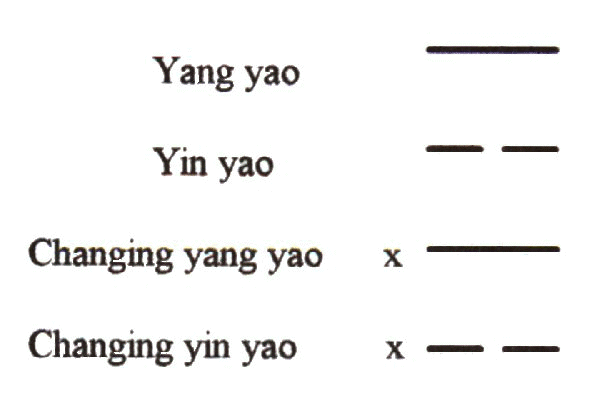
Procedures to get a hexagram:
- Write down your question you want to ask.
- Concentrate on the question for about 3 minutes with the intention of
obtaining an answer to help you solve the problem.
- Toss the three coins.
- Record the result as one of the four : HHH, HHT, HTT, TTT.
- Repeat the tossing for a total of six times. You may get something like
this, as an example,
- HHT
- HTT
- HTT
- HHH
- HHT
- HHT
- Draw the yao representing the first result, i.e. HHT.

- Draw the yao representing the second result, i.e. HTT on top of the first one.

- Draw the yao representing the third result, i.e. HTT on top of the second one.
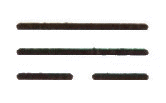
- Draw the yao representing the fourth result, i.e. HHH on top of the third one.
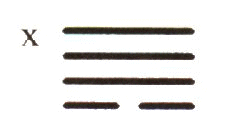
- Draw the yao representing the fifth result, i.e. HHT on top of the fourth one.
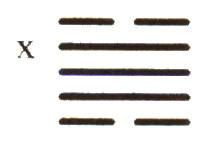
- Draw the upper most yao representing the sixth result, i.e. HHT.
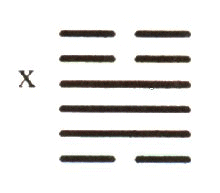
- Now the hexagram is complete.
- Draw another hexagram with the changing yao changing from yang to yin and obtain :
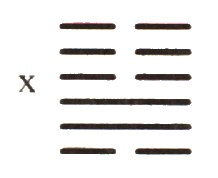
- The first hexagram is called the current gua while the second hexagram
called the projected gua.
The current gua reveals the present situation while the projected gua is the intended outcome in the near future. Notice the hexagram is constructed from bottom to top. It is like building a house, starting at the bottom.
The current gua in this example is Thunder on Wind while the projected gua is Earth on Wind.
Before going into the interpretation, you should familiarize yourself with performing the experiment, drawing the hexagrams and naming the hexagrams.
Previous Lesson | Next Lesson
Table of Contents
|







